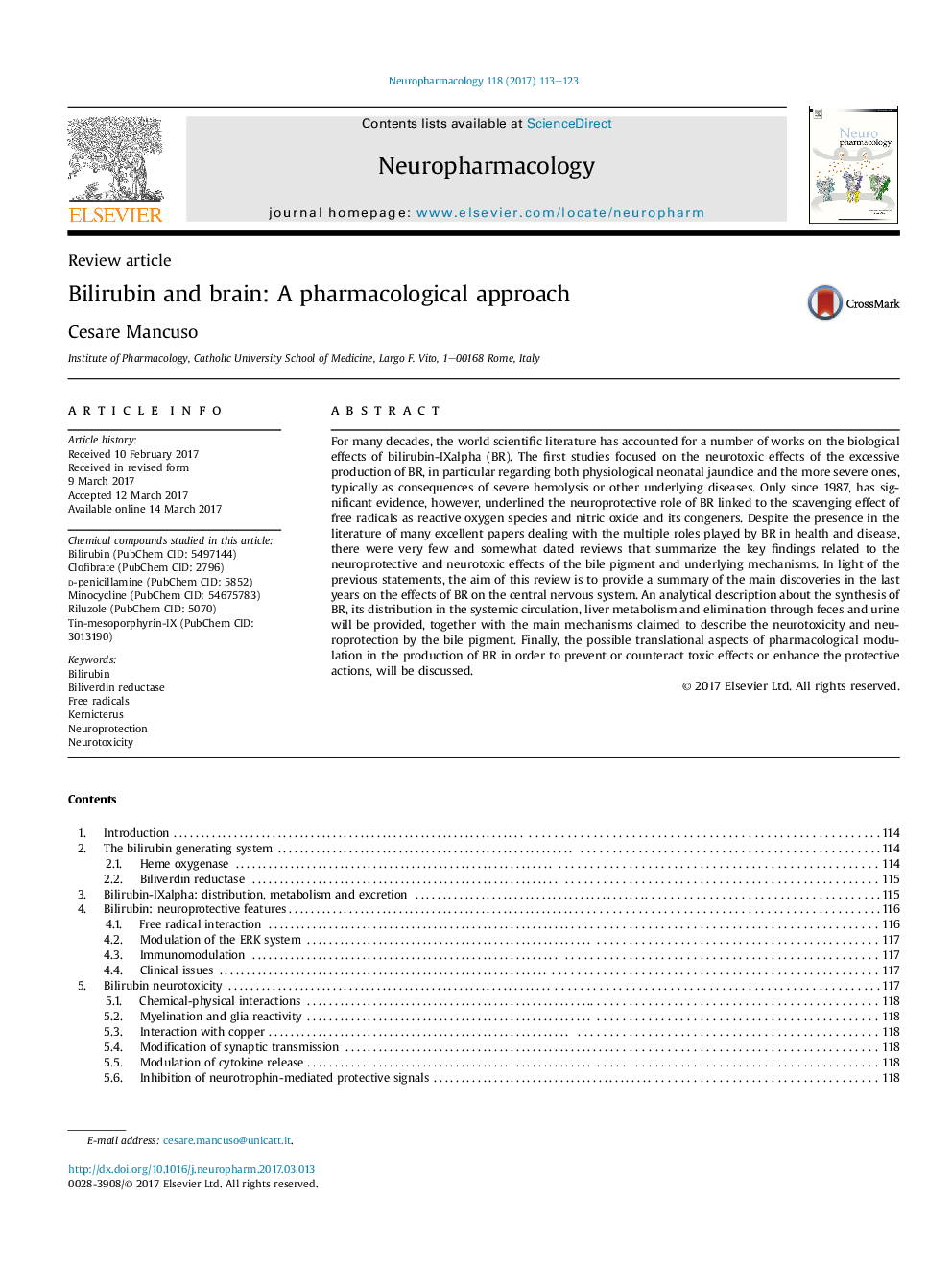| کد مقاله | کد نشریه | سال انتشار | مقاله انگلیسی | نسخه تمام متن |
|---|---|---|---|---|
| 5549009 | 1556599 | 2017 | 11 صفحه PDF | دانلود رایگان |
- Bilirubin-IXalpha (BR) is the final product of heme metabolism in mammals.
- BR is an endogenous molecule with a strong free radical scavenging activity.
- If produced in excess, BR becomes toxic for many tissues, especially the brain.
- The enhancement of BR's antioxidant activity is not a feasible approach to counteract neurodegeneration.
- Current guidelines do not recommend any drug to contrast BR-induced neurologic damage.
For many decades, the world scientific literature has accounted for a number of works on the biological effects of bilirubin-IXalpha (BR). The first studies focused on the neurotoxic effects of the excessive production of BR, in particular regarding both physiological neonatal jaundice and the more severe ones, typically as consequences of severe hemolysis or other underlying diseases. Only since 1987, has significant evidence, however, underlined the neuroprotective role of BR linked to the scavenging effect of free radicals as reactive oxygen species and nitric oxide and its congeners. Despite the presence in the literature of many excellent papers dealing with the multiple roles played by BR in health and disease, there were very few and somewhat dated reviews that summarize the key findings related to the neuroprotective and neurotoxic effects of the bile pigment and underlying mechanisms. In light of the previous statements, the aim of this review is to provide a summary of the main discoveries in the last years on the effects of BR on the central nervous system. An analytical description about the synthesis of BR, its distribution in the systemic circulation, liver metabolism and elimination through feces and urine will be provided, together with the main mechanisms claimed to describe the neurotoxicity and neuroprotection by the bile pigment. Finally, the possible translational aspects of pharmacological modulation in the production of BR in order to prevent or counteract toxic effects or enhance the protective actions, will be discussed.
Journal: Neuropharmacology - Volume 118, 15 May 2017, Pages 113-123
